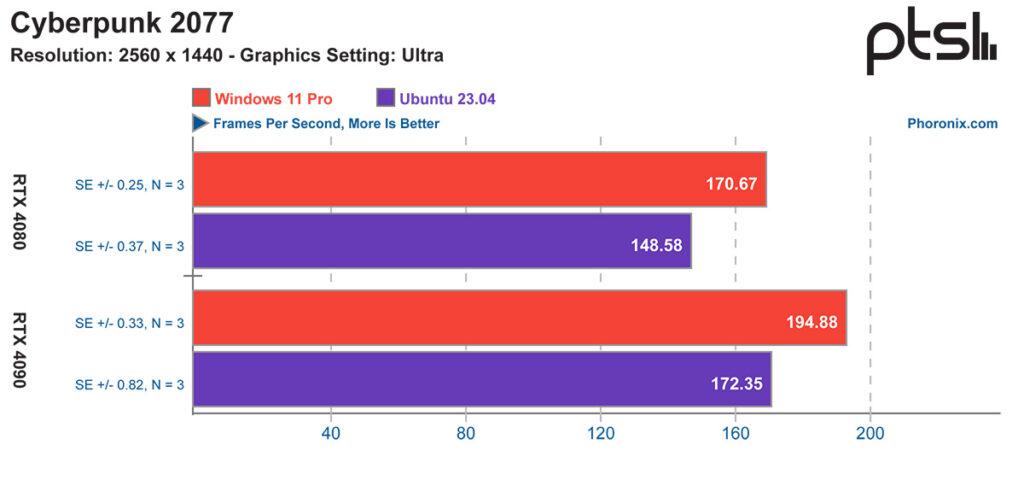NVIDIA’s RTX 4080 & 4090 Face Off: Linux Gaming Takes on Windows 11
In the past, Linux users were limited to playing games with native support or emulator-based titles. However, since the introduction of the Steam Deck and its Proton compatibility layer technology, many games initially exclusive to Windows have become playable on Linux. Consequently, a question arises: what is the performance gap between running games on Windows and Linux using the same hardware?

Recently, Phoronix conducted a performance comparison test between Linux and Windows 11 using the same graphics card. They employed NVIDIA’s latest RTX 4080 and RTX 4090 cards and ran Cyberpunk 2077 and Hitman 3 via Steam Play (based on Proton). Despite the performance loss from transitioning from DirectX to Vulkan on Linux, Proton proved highly efficient, with Linux (Ubuntu 23.04) achieving approximately 90% of the frame rate levels observed on Windows 11.

At the highest graphics settings and a 2K resolution, Linux compared to Windows 11 yielded a 12% difference when running Cyberpunk 2077 on the RTX 4090 and a 15% difference on the RTX 4080. However, when lowering the settings to high quality, the gap for the RTX 4090 narrowed to 5%, while the RTX 4080 maintained a 15% difference. Performance at 4K resolution was similar to that at 2K, although Phoronix did not provide tests with ray tracing and DLSS enabled. The situation with Hitman 3 was more variable: at the highest graphics settings and a 2K resolution, the performance gap between the two operating systems was only 5%, but when increased to 4K ultra-high quality, the difference widened to 15%.


In addition, Phoronix tested benchmarking software and rendering tasks, revealing that with native support, Linux could fully harness the power of the RTX 4080 and RTX 4090, delivering performance comparable to that on Windows 11. This indicates that the operating system no longer affects graphics card performance, and it primarily depends on game support.




